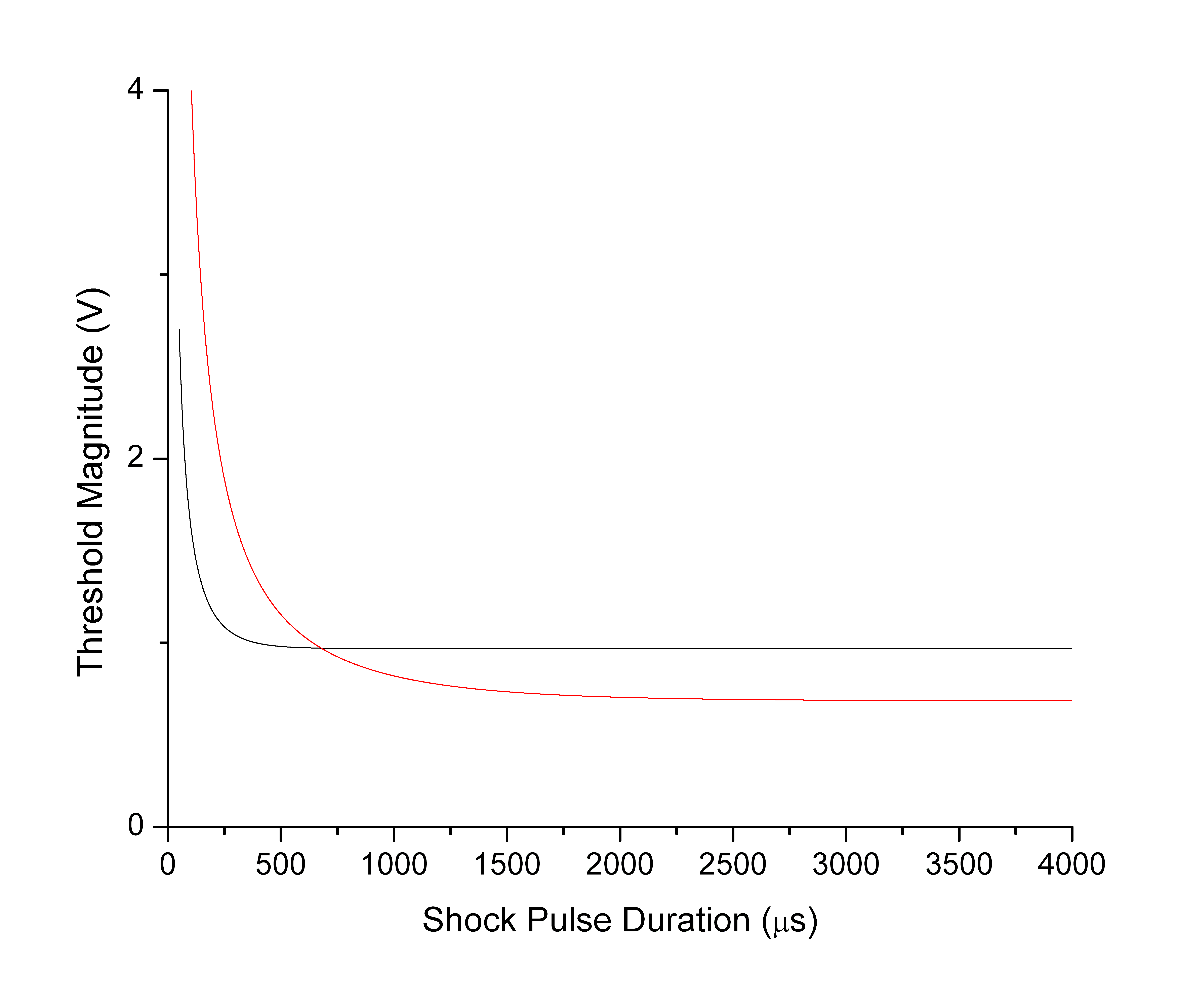Electroconformational Changes in Membrane Proteins
One of the research projects is to understand the mechanisms involved in wound healing, especially for electrical injury. When our body is exposed to an intensive electric field even though for short period such as lightning shock and electrocution, cells in the pathway of electric current may suffer severe damage. In addition to electroporation in phospholipid bilayer, we launched the investigation on how the electric field affects the membrane proteins, especially the voltage-dependent ion channels, transporters and electrogenic pumps. We studied the functional and structural changes in Na and K channels, dihydropuridine receptor, and Na/K pumps. These studies are particularly relevant to the problem of explaining the neuromuscular damage following high-voltage electrical injuries

The figure on the right is a comparison of the potential threshold in electroporation of membrane lipid bilayer and denature of the voltage-gated Na channel in response to a pulsed electric field with various pulse durations. We found that in response to a relatively long pulsed electric shock (longer than the membrane intrinsic time-constant), a lower membrane potential is needed to electroporate the cell membrane than that denatures the membrane proteins, while for a short pulse a higher membrane potential is needed. In other words, phospholipid bilayer is more sensitive to the electric field than the membrane proteins for a long pulsed shock, while for a short pulse the proteins become more vulnerable. We can predict that for a short or ultra short-pulsed electric shock the minimum membrane potential required to denature the protein functions in the cell plasma membrane is lower than that reduces the membrane integrity.
Selected Publications
- Chen, W., Zhang, Z.S., and Lee, R., Supramembrane potential-induced electroconformational changes in sodium channel proteins: a potential mechanism involved in electric injury. Burns, (32)52-59, 2006
- Huang, F., Fang, Z.H., Mast, J., and Chen, W., Comparison of Membrane Electroporation and Protein Denature in Responding to Pulsed Electric Field with Different Durations, Bioelectromagnetics, 2012